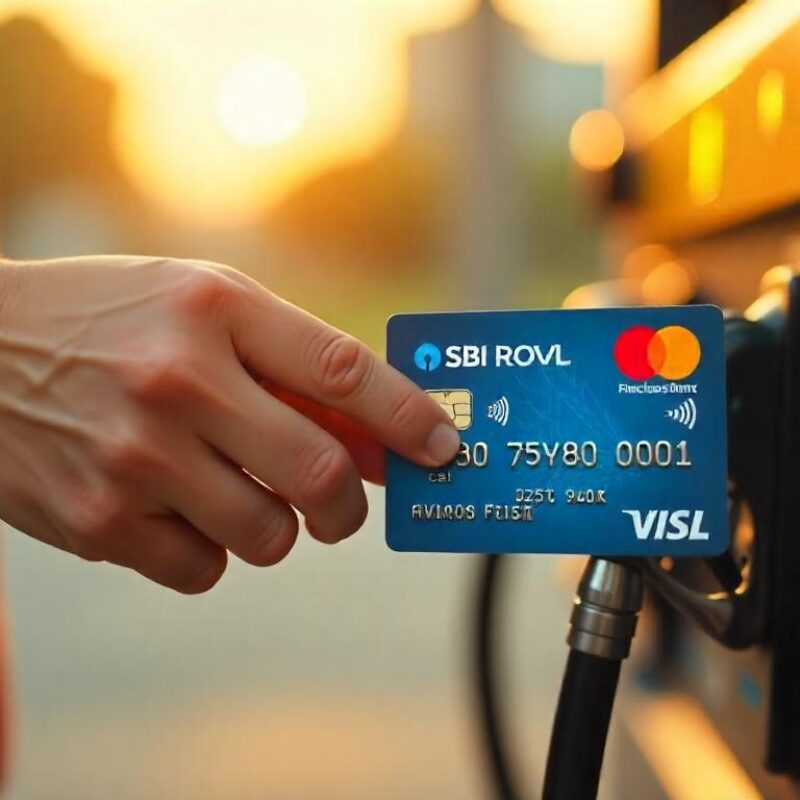Hunting for your first credit card while juggling lectures and semester fees? Choosing a card with a genuinely low student credit card interest rate in India can keep your chai budget—and your CIBIL score—healthy for years. This guide explains what “low” means for Indian students in 2025, how Reserve Bank of India (RBI) repo‑rate moves affect your APR, and the smart hacks that can shave thousands of rupees off your future repayments.

Why Interest Rates Matter for Indian College Students
India’s average credit‑card APR hovers between 30 % and 42 % per annum—far steeper than many Western markets. Even a two‑percentage‑point difference compounds quickly when you’re paying the minimum due each month. That difference could cover your next semester’s broadband plan or a round‑trip train ticket home.
Average Student Credit Card APRs in India (2025)
- Overall average APR: 39.2 % p.a.
- Introductory rate average: 0 % for 3‑6 months (limited issuers)
- Ongoing APR range: 24 %‑48 % p.a.
(Sources: RBI monthly bulletin March 2025; public issuer disclosures)
What Counts as a “Low” Student Credit Card Interest Rate in 2025?
Given current repo‑rate conditions (RBI repo at 6.50 %), a low student APR in India is below 30 % p.a. after any introductory period. Cards priced 24%-29.9 % place you in the most competitive quartile of available student offers.
| Category | Ongoing APR (p.a.) | Percentile |
|---|---|---|
| Exceptional | < 24 % | Top 10 % |
| Low (target) | 24 %‑29.9 % | 25th percentile |
| Average | 30 %‑39.9 % | Median |
| High | ≥ 40 % | Bottom 25 % |
Pro tip: Some Indian fintechs quote “monthly interest” (e.g., 2.5 % per month). Multiply by 12 for a true annual figure before comparing.

RBI Repo Rate vs. Student Credit Card Interest Rate (2015‑2025)
Issuers in India seldom offer variable credit‑card rates that move directly with the repo, but macro trends still matter for new applicants. When repo rises, card APRs generally reset higher within a quarter.
| Fiscal Year | RBI Repo (FY‑end) | Avg Student APR | Spread |
|---|---|---|---|
| 2016 | 6.75 % | 32.5 % | 25.8 % |
| 2018 | 6.25 % | 34.1 % | 27.9 % |
| 2020 | 4.40 % | 36.8 % | 32.4 % |
| 2022 | 4.90 % | 38.9 % | 34.0 % |
| 2025 | 6.50 % | 39.2 % | 32.7 % |
Unique Indian Factors That Influence Your Student Credit Card Interest Rate
- CIBIL Score Weightage: Unlike in the U.S., thin‑file applicants often start near 35 %‑40 % p.a. APR regardless of score; moving above 750 CIBIL unlocks meaningful drops.
- Co‑branded Partnerships: Campus‑focused cards (e.g., SBI‑IRCTC Student, HDFC Millennia Edge) occasionally offer sub‑30 % APRs along with railway or OTT‑subscription perks.
- Rupay vs. Visa/Mastercard: Rupay student cards sometimes waive fuel‑surcharge, but interest rates are issuer‑driven, not network‑driven.
- EMI Conversion: Many Indian cards let you convert spends above ₹3,000 into EMIs at 14 %‑20 % reducing‑balance rates—often cheaper than revolving credit.
5 Ways to Secure a Lower Student Credit Card Interest Rate in India
- Start with a secured credit card (backed by fixed deposit) for 6‑9 months; upgrade to unsecured with negotiated APR.
- Maintain under‑20 % credit utilization by paying in full or multiple times a month.
- Submit proof of stipend or part‑time income; some issuers recalculate risk margins quarterly.
- Opt into e‑mandate auto‑debit to dodge late‑payment penalties (₹1,300+ GST) and penalty interest.
- Leverage festival‑season offers (Diwali/New Year): banks roll out limited‑time APR reductions and lifetime‑free upgrades.

Comparing EMI vs. Revolving Credit for a ₹20,000 Laptop Purchase
| Option | Tenure | Interest/Processing | Total Cost | Effective APR |
|---|---|---|---|---|
| Revolving @ 36 % p.a. | Pay ₹2,000/month | None | ₹22,476 | 36 % |
| EMI @ 18 % reducing | 12 months | ₹299 processing | ₹21,952 | 19.7 % |
Takeaway: Converting large-ticket student spends to EMI plans often beats carrying a balance, even when processing fees apply.
Student Credit Card vs. UPI Overdrafts
| Feature | Student Credit Card | UPI OD (e.g., LazyPay, Paytm Postpaid) |
|---|---|---|
| Average APR | 30 %‑40 % p.a. | 24 %‑32 % p.a. |
| Grace period | Up to 50 days | None; billed fortnightly/monthly |
| Credit‑score impact | High | Moderate (reported selectively) |
| Rewards | Cashback, points | Minimal |
| Merchant acceptance | Universal | Domestic UPI only |
If your UPI spend is dominant and you clear balances in weeks, a UPI OD could temporarily undercut a high student credit card interest rate—but you’ll forgo global acceptance and reward points.

Frequently Asked Questions
What is considered a low interest rate for an Indian student credit card?
A student credit card interest rate below 30 % p.a. is competitive in 2025; rates under 24 % are exceptional.
Is it better to use EMI or revolve the balance?
For purchases above ₹3,000, converting to EMI at 14 %‑20 % reducing balance usually costs less than revolving at 30 %‑40 % APR.
Does paying the minimum due hurt my CIBIL score?
Paying only the minimum won’t ding your score immediately, but your credit‑utilisation ratio stays high, keeping APR offers expensive.
Can international students apply for Indian student credit cards?
Most banks require proof of income or an Indian guarantor. A secured FD‑backed card is the easiest workaround.
Don’t Miss These Related Guides
👉 Student Credit Cards: Tips & Mistakes 2025
👉 Student Credit Card in India: Your Ultimate Guide to Smart Spending as a Student
👉Best Credit Cards for Students in 2025: Build Credit & Earn Rewards
Action Checklist Before Applying
- Compare at least three student cards (public‑sector, private‑sector, and fintech).
- Calculate APR in annual terms, not monthly.
- Ask about EMI conversion rates for spends over ₹5,000.
- Check if the card is lifetime free or waives annual fee after ₹30k‑₹50k yearly spend.
- Plan a payoff strategy to avoid GST‑inclusive late fees.
Securing a sub‑30 % student credit card interest rate in India is challenging but possible—especially if you leverage fixed‑deposit cards, festival offers, and diligent repayment habits. Lock in the lowest rate you can today, pay on time every month, and your future self will graduate debt‑light and credit‑strong.




![7 Best Lifetime Free Credit Cards with Huge Perks [2025]](https://rflsolutions.in/wp-content/uploads/2025/06/best-lifetime-free-credit-cards-2-800x800.jpg)


